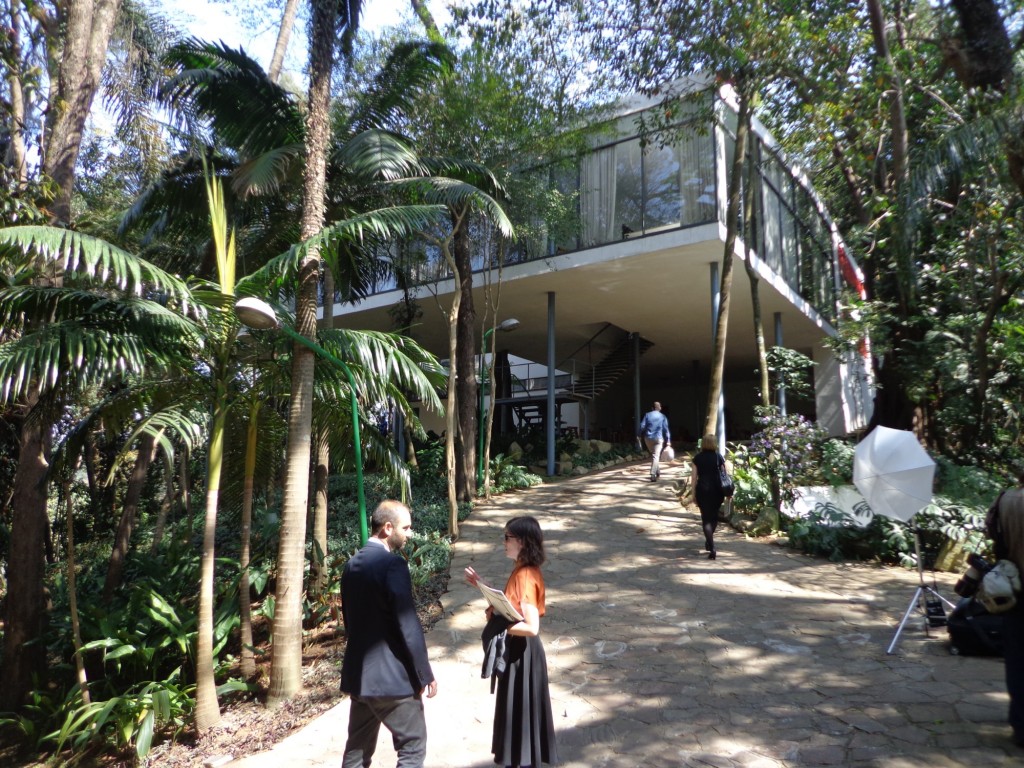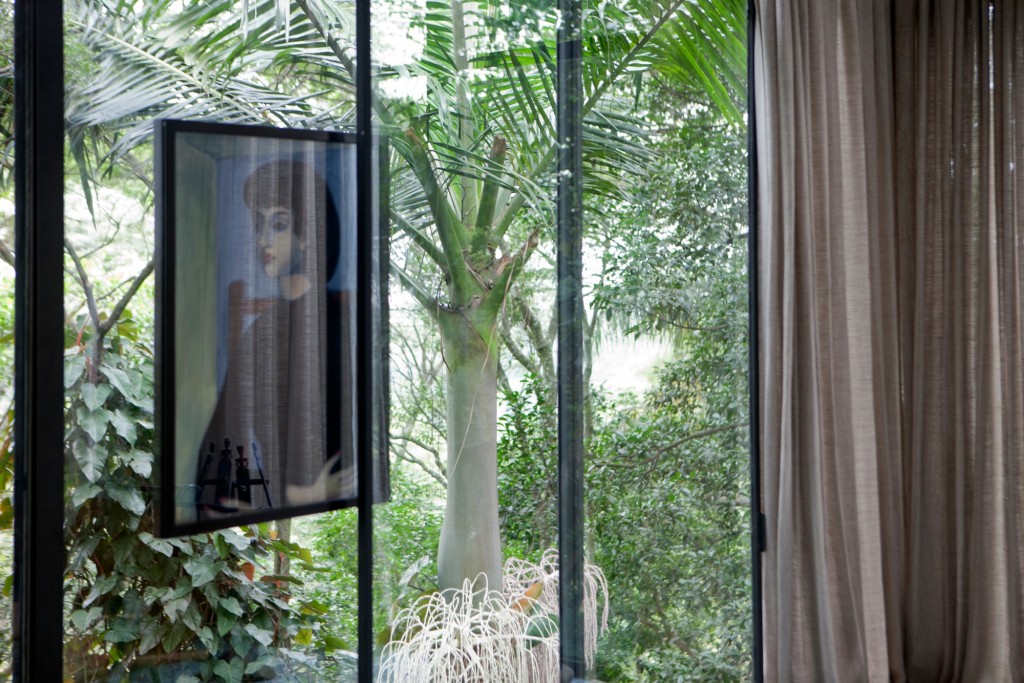Claire Rigby visits the stunning Casa de Vidro, one of many modernist masterpieces hidden in our tropical concrete jungle. If you’re lucky enough to be in São Paulo, get there. Photo above © Claire Rigby
By Claire Rigby
There’s no vista quite like São Paulo’s, with its long swathes of grey-and-white apartment blocks, punctuated by a few, all too few, exuberant architectural huzzahs. There’s the pink, metallic cylinder of the Instituto Tomie Ohtake – a novelty candy-cane as seen from far away, but a building of real, complex beauty seen from close up. Also by the architect Ruy Ohtake, there’s the Hotel Unique, shaped like an upturned slice of melon (no – really), where the walls of the outermost hotel rooms curve up and away in the strangest of manners. And there’s the MASP, Avenida Paulista’s massive, crouching art museum – a glassy box suspended under a colossal pair of bright red supports, created in 1968 by the architect Lina Bo Bardi.
The city’s rich modernist legacy, In which Bo Bardi played a pivotal part, takes a little longer to uncover than its more whimsical constructions – or at least, it did. São Paulo has never seemed of more interest, architecturally, following a cascade of features in the international press on the city’s modernist DNA – most recently in a perceptive FT piece this month by Edwin Heathcote. It includes a long section on the famous Casa de Vidro – the home Lina Bo Bardi created for herself and her husband soon after their arrival in Brazil from Italy, in 1946.
Few buildings have received more attention here recently than the exquisite modernist home, since having been closed for the best part of six years, the house is currently open for visits until the end of May. And with the house and garden taken over by a major, site-specific art exhibition, ‘The Insides are on the Outside’, this is the best possible chance to see the house at its best – and to enjoy the added layer of world-class art, created specifically in honour of the house and Bo Bardi’s legacy (find out more on the artworks here).
Resting on a set of impossibly slender columns, with its cool tones and glass walls the building has been lauded as one of the world’s finest modernist homes – a style seen to brilliant effect here in the tropics, where even the material, concrete, fares better than in colder climates.
When the house was finished in 1951, the plot of land it stands on had been part of a tea plantation, and was consequently bare of vegetation. Photographs from the period show Bo Bardi gazing from the wraparound windows onto faraway wooded hills, where today, high-rises line up shoulder to shoulder, just visible through breaks in the forest that now surrounds the house, tangled in green on every side, as Lina intended.
Bo Bardi arrived from Italy in 1946 with her husband Pietro Maria Bardi (see pencil-drawn cartoons of the couple, above, by Alexander Caldas). Pietro had been invited to create the São Paulo museum of art – the MASP, which was initially located in a downtown neoclassical building, on Rua Sete de Abril. The contrast between the war-torn world the couple left behind and a Brazil on the brink of modernism – Brasília was created in the period 1956-60 – proved a heady one for Lina. She became infatuated with the possibilities open to Brazil and in particular, throughout her life, with its rich tradition of folk art, much of which is on display in her home, including an immense iron-framed, papier machê goat sculpture from Bahia, in the space below the house. A recorded testimony given by the architect Paulo Mendes da Rocha, played in the same space as part of the exhibition, praises her ability, as an outsider, to appreciate the best of Brazilian culture.
He cites a phrase from a samba, ‘Tu pisavas nos astros distraída‘ (‘you stepped on the stars, distracted’). ‘I think she [Lina] saw as like that,’ Mendes da Rocha says – ‘as people stepping on the stars absentmindedly, and wanted to tell us about the wonder that existed here. … If she had remained there in Europe with her erudition, she would certainly not have created this work. She might have produced a beautiful oeuvre, but never with this lyrical and poetic character, with this power.’
Climbing the stairs into the house, there’s a sense of vertigo as your gaze slips between the granite slabs that form the staircase. And inside, vertigo again as you admire the slender columns that punctuate the main space, piercing the blue mosaic floor – and as you realise these are the same pilotis holding up the entire front section of the house. Cool, calm and utterly understated, the house was created to approximate its inhabitants to nature, and to get out of the way in order to do so, rather than being ostentatiously beautiful.
Lina never wanted it to be ‘like a closed house that shies away from the storms and the rain’, as she wrote in a 1953 text in the magazine Habitat. It never was a closed house: the Bardis entertained and put up countless friends and acquaintances in the Glass House in the forty years they lived there, until their deaths in 1992 (Lina) and 1999 (Pietro, at the age of 99). And on a wet April afternoon last week, circulating through the house’s exquisite spaces and admiring the art inspired by it, with rain lashing the windows, the tangled green foliage outside dripping and swaying, and strangers’ children darting about, it felt wide open again. You should go.
Above, an image from the short film Feitiço, by Pedro Barateiro – at SESC Pompeia, where part of the exhibition, ‘The Insides are on the Outside’, also takes place.





